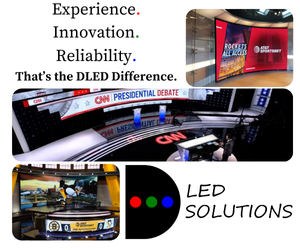Protocol standards fuel PTZ camera integration in broadcast operations

Subscribe to NCS for the latest news, project case studies and product announcements in broadcast technology, creative design and engineering delivered to your inbox.
The integration of IP-based protocols like NDI (Network Device Interface) and SRT (Secure Reliable Transport) into PTZ cameras is accelerating their adoption across broadcast environments, according to industry experts.
“Network Device Interface for local production and Secure Reliable Transport, which have become de-facto standards for studio and remote production over IP/internet,” said Edgar Shane, general manager of engineering and product development at JVC Professional Video.
These protocols offer broadcasters new flexibility in signal transport while maintaining broadcast-quality images and addressing key technical hurdles in PTZ integration.
“When integrating PTZ cameras into existing broadcast workflows, it is important to consider connectivity, remote control and that the image characteristics match the other cameras on location,” Shane said.
“NDI allows for seamless integration of video sources, devices and software applications within a production environment with straightforward setup and configuration,” said Ivy Lee, Telycam’s marketing manager, on NDI’s appeal.
For broadcasts extending beyond local networks, SRT protocol provides additional capabilities.
“SRT is important for remote production workflows because of its ability to securely and reliably deliver high-quality video with low latency even over the unpredictable public internet,” Lee said.
This protocol flexibility enables new production approaches.
Rich Eilers, Canon national account sales director, pointed to universities using PTZ systems for sports coverage.
“Canon has seen universities take advantage of the PTZ platform to cover their smaller revenue generating sports entirely remote from a control room with the use of 4-6 cameras that are installed for the season at each sports location,” Eilers said.
The integration of standardized protocols also supports emerging production techniques.
“With more PTZ camera vendors such as Telycam integrating support for the FreeD protocol into their products, PTZ cameras are playing a growing role in AR/VR production by providing dynamic, high-quality video feeds,” Lee said.
However, successful integration requires careful planning.
“Additional specifications to take into consideration are what protocols are being used and does the PTZ camera offer various options for added flexibility, such as traditional SDI, fiber or video-over-IP, NDI and SRT protocols,” Shane said.
Color matching across different camera types remains a technical consideration.
“The ability to be able to color correct the PTZs to match the look of the other cameras in your infrastructure is critical to a uniformed-looking production. Ensuring that the PTZs have the capabilities to do so prior to purchasing is a smart move,” Eilers said.
The combination of protocol standardization and improved image quality has positioned PTZ cameras as viable alternatives to traditional broadcast camera systems in many applications.
“PTZs have really stepped up their game in the past few years, providing high performance imaging with quite capable optics packages to be able to stand in for many traditional and non-traditional broadcast shots,” Eilers said.
This protocol-driven integration allows broadcasters to scale their operations more efficiently.
“As production needs grow, additional PTZ cameras can be easily integrated into the setup. This scalability ensures that the system can adapt to evolving requirements over time,” Lee said.
For smaller broadcasters, these developments offer new production capabilities.
“Smaller broadcasters with limited production personnel can take advantage of having these better capabilities built into these cameras to have a high-end multi-camera show put together with a smaller production team,” Eilers said.
The integration of standardized protocols has addressed previous technical barriers while enabling new production workflows. As PTZ cameras evolve, their role in broadcast operations expands beyond traditional applications, supported by protocols that ensure reliable signal transport and seamless integration with existing infrastructure.
Subscribe to NCS for the latest news, project case studies and product announcements in broadcast technology, creative design and engineering delivered to your inbox.







tags
Canon, Edgar Shane, Ivy Lee, JVC, NDI, PTZ, PTZ Cameras, Rich Eilers, SRT, Telycam
categories
Broadcast Equipment, Cameras, IP Based Production, PTZ Cameras, Remote Production